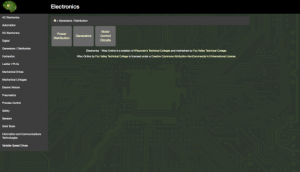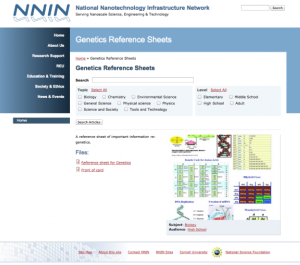Browse Resources
Resources | |
|---|---|
This 5-page article, written by Donna Milgram of the National Institute for Women in Trades, Technology & Science, explores the gender differences in teaching science, technology, engineering, and math (STEM). "There are gender differences in learning styles specific to science, math, engineering...
This 4-page report from Sheila Tobias discusses issues related to women in mathematics and science. Key aspects explored include math anxiety and coping strategies, as well as important research on classroom conditions for female math and science students. This document may be downloaded in PDF file...
This video, from G. Grant Welstead, Tobias Brambrink, and Rudolf Jaenisch of MIT's Whitehead Institute for Biomedical Research, Massachusetts Institute of Technology explores how to generate iPS cells from Mouse Embryo Fibroblasts. The video is also accompanied by protocols for thawing and freezing...
This is a web page with learning objects on Generators and Distributors. The lessons are on the topics of power distribution, motor control circuits, and generators.
This 24-page report, published by St. Francis Catholic High School in Sacramento, describes the design and construction of Enhydra, an underwater remotely operated vehicle (ROV). This report was created by Geneseas, a student group that participated in the 2021 MATE ROV competitions Ranger class....
This 25-page report, published by St. Francis Catholic High School, describes the design and construction of the underwater remotely operated vehicle (ROV) created by the Geneseas team for the Ranger Class of the 2022 MATE ROV competition. MATE ROV is a global competition that challenges STEM...
This 25-page report, from St. Francis Catholic High School, describes the design and construction of the underwater remotely operated vehicle (ROV) created by the Geneseas team for the Ranger Class of the 2023 MATE ROV competition. MATE ROV is a global competition that challenges STEM students to...
As genetics and genomics research advances rapidly through the knowledge gained from the completed human DNA sequence, teachers and educators require new classroom tools to present the rich history, complexity and excitement of the world of genetics and genomics. These teaching resources include...
This reference sheet, presented by the National Nanotechnology Infrastructure Network provides a valuable information on genetics and cell division for high school students studying these topics. The sheet includes diagrams of DNA molecules, information on the genetic code for amino acids, both a...
The consortium's mission is to bring functional genomic methods into undergraduate curriculum primarily through student research. As part of their mission, GCAT sponsors faculty workshops in DNA Microarrays and, more recently, Synthetic Biology. The consortium also provides a centralized chip reader...
| |
| ← Previous | Next → |









